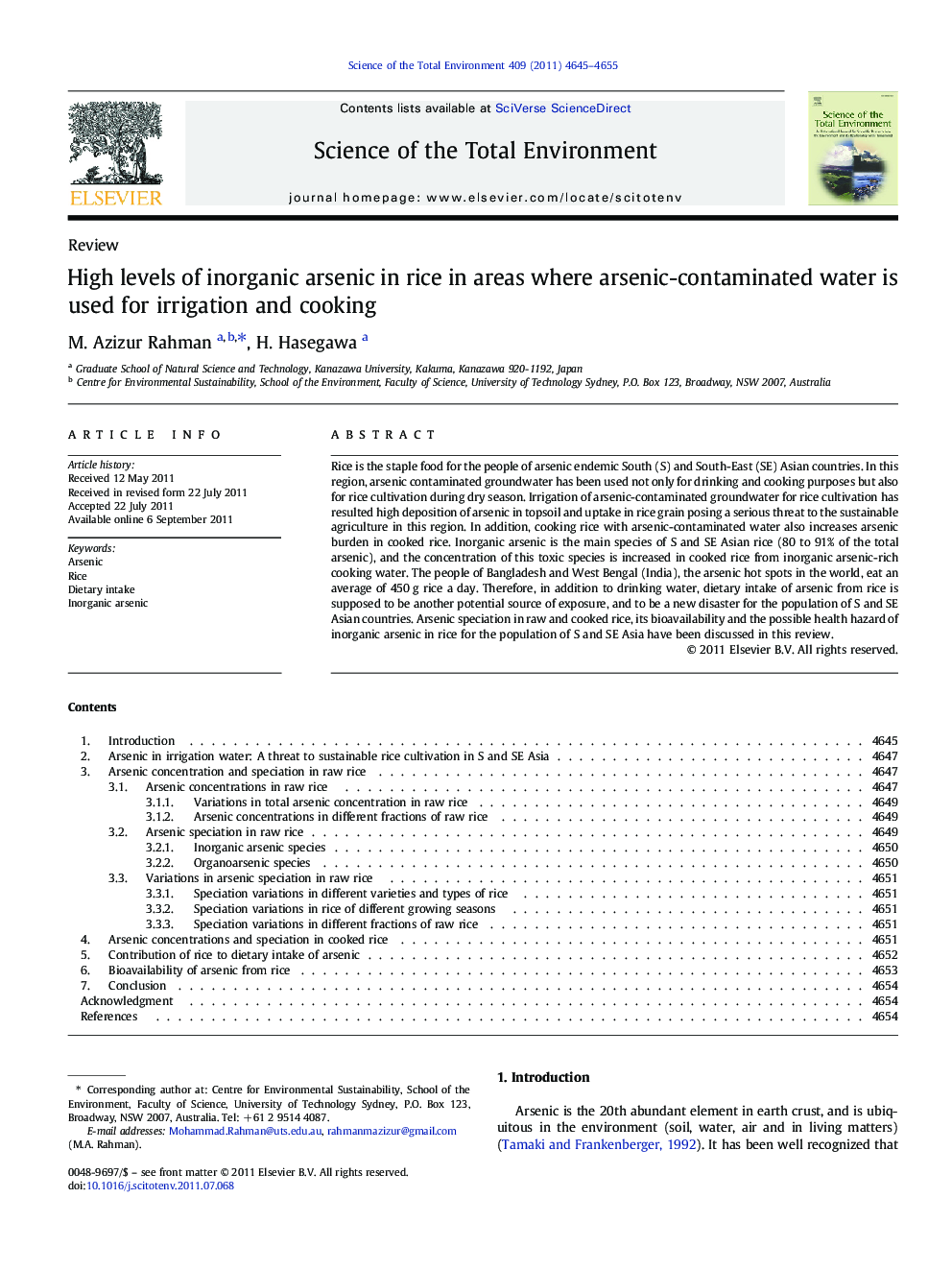| Article ID | Journal | Published Year | Pages | File Type |
|---|---|---|---|---|
| 4429951 | Science of The Total Environment | 2011 | 11 Pages |
Rice is the staple food for the people of arsenic endemic South (S) and South-East (SE) Asian countries. In this region, arsenic contaminated groundwater has been used not only for drinking and cooking purposes but also for rice cultivation during dry season. Irrigation of arsenic-contaminated groundwater for rice cultivation has resulted high deposition of arsenic in topsoil and uptake in rice grain posing a serious threat to the sustainable agriculture in this region. In addition, cooking rice with arsenic-contaminated water also increases arsenic burden in cooked rice. Inorganic arsenic is the main species of S and SE Asian rice (80 to 91% of the total arsenic), and the concentration of this toxic species is increased in cooked rice from inorganic arsenic-rich cooking water. The people of Bangladesh and West Bengal (India), the arsenic hot spots in the world, eat an average of 450 g rice a day. Therefore, in addition to drinking water, dietary intake of arsenic from rice is supposed to be another potential source of exposure, and to be a new disaster for the population of S and SE Asian countries. Arsenic speciation in raw and cooked rice, its bioavailability and the possible health hazard of inorganic arsenic in rice for the population of S and SE Asia have been discussed in this review.
► Arsenic (As) deposition in paddy soil from irrigation water is a threat to the sustainable rice cultivation in South Asia. ► Cooking rice with arsenic-contaminated water increases its burden in cooked rice. ► Toxic inorganic As is the main species in Asian rice, and its content is increased in cooked rice from cooking water. ► As in rice is a potential source of exposure, and is supposed to be a new disaster for South Asia.
